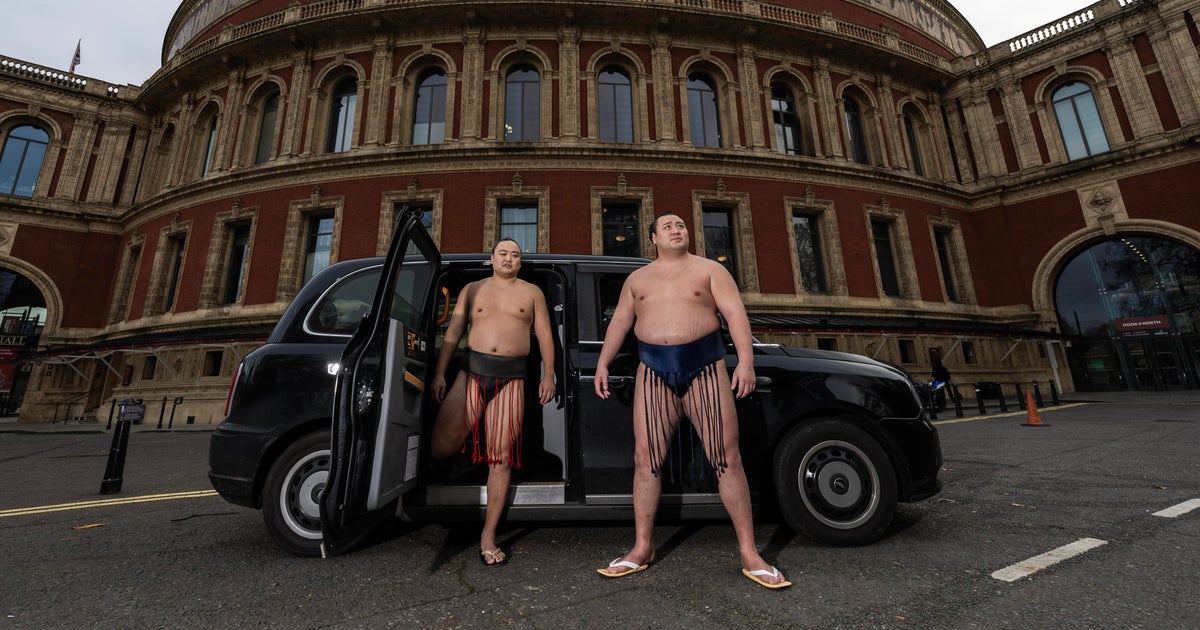
**Sumo Wrestling Makes Rare Appearance at London’s Royal Albert Hall**
The world of professional sumo wrestling stepped outside Japan for only the second time in its centuries-long history on Wednesday night, as fighters clashed on a specially constructed ring in the middle of London’s Royal Albert Hall.
The iconic venue in the British capital is hosting the Grand Sumo Tournament — the roughly 1,500-year-old sport’s most important competition — for the second time, drawing more than 44 professional wrestlers, or rikishi, to compete in 100 bouts over five days.
The only other time the tournament was held outside Japan was in 1991, when it also came to the Royal Albert Hall.
### Preserving Tradition Abroad
Bringing sumo to London presents unique challenges. The contemporary national sport of Japan is deeply rooted in two millennia of tradition, closely interwoven with the Shinto religion. It is treated with the utmost respect and protection to ensure adherence to its rituals and norms.
“One of the things that we’ve worked really hard at is to make sure that we have a good understanding of the cultural and religious significance that sumo has,” Matthew Todd, the Royal Albert Hall’s programming director, told CBS News. He added that attention to detail was “really critical to the authentic presentation that we’re able to make here.”
To preserve the sport’s authenticity, 11 tons of clay were shipped from Japan to construct the ring, or dohyo, in the center of the concert venue where the wrestlers compete. The shipping containers crossed the sea for three months on their voyage.
A large team of ring attendants, known as yobidashi, also traveled from Japan, accompanied by 11 interpreters to facilitate communication with British workers.
The roof for the dohyo, suspended from the Albert Hall ceiling, was built in Britain but designed to mimic traditional Japanese Shinto shrines. According to Todd, this design helps to emphasize that the dohyo is a “sacred area” where rituals and holy ceremonies are conducted before and during the tournament. It is a vital step to ensure the Shinto gods receive due respect before the fights begin.
### Sumo’s Cultural and Religious Roots
Sumo is deeply intertwined with Japanese culture and religion in ways that may be difficult for many Western sports fans to fully comprehend. According to legend, sumo originated as a ritual to ask the gods for a bountiful harvest, but over almost 2,000 years, it has evolved into the competitive sport seen today.
Competitors remain primarily from Japan, though wrestlers now hail from around the world. In recent years, many of the top champions have come from Mongolia; this year’s tournament features two rikishi from Ukraine. While American wrestlers have competed successfully in past tournaments, no U.S. rikishi are participating in this year’s London event.
The sport itself involves intricate rules and nuances, including 82 winning techniques called kimarite, multiple ranks and divisions, and a host of other regulations. To help the largely Western audience follow the action, in-ear English commentary and video replay screens have been provided at the Royal Albert Hall to describe and explain the bouts — which can sometimes end in just seconds when a competitor is forced out of the ring.
### Life as a Rikishi
Sumo wrestlers live highly regimented lives. They are forbidden from driving cars and, somewhat counterintuitively, are often required to skip breakfast. They typically take a long nap after a hefty lunch to aid in gaining weight. The average weight of a rikishi is around 330 pounds, with some tipping scales at 550 pounds.
Despite their strict routines, the wrestlers have been given some downtime during their visit to London, likely recognizing the value of publicity. Leading up to the tournament, social media was filled with photos and videos of the kimono-clad wrestlers sightseeing around the British capital.
### The Presence of Yokozuna
This week, the Albert Hall is also graced by the presence of two yokozuna, the highest rank in sumo wrestling. The term yokozuna is generally translated as “grand champion,” but literally means “horizontal rope,” referring to the special rope worn around their waists to signify their rank.
Once a rikishi is promoted to yokozuna, they retain the title until retirement. In nearly 400 years of professional sumo, only 75 men have attained this prestigious status. The honor typically requires multiple consecutive championship wins and approval by a dedicated council that evaluates not only wrestling skills but also a range of personal attributes.
### The Road to the Championship
The tournament is set to conclude on Sunday, when the wrestler with the most victories will be crowned this year’s champion. The field is considered wide open, but many, especially fans back in Japan, will be rooting for 25-year-old Yokozuna Onosato — the country’s first grand champion in nearly a decade — to emerge victorious.
—
Stay tuned as traditional Japanese sumo wrestling continues to mesmerize fans across the world from the historic stage of London’s Royal Albert Hall.
https://www.cbsnews.com/news/grand-sumo-tournament-london-second-time-outside-japan/


